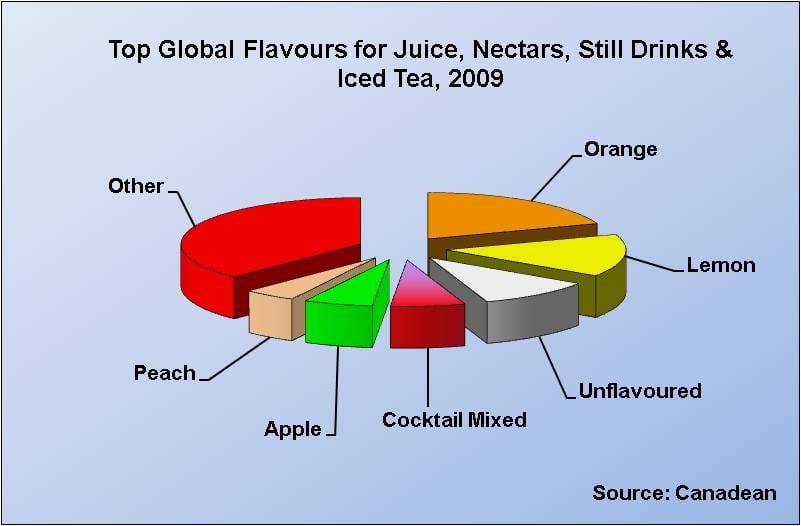According to the Canadean report, ‘Flavour Trends in Juice and Iced Tea Drinks’, shares in orange as a flavour have dropped to less than one in every five litres sold of juice, juice drinks and iced teas when five years ago this figure was between 23 and 24 per cent.
A spokesperson for Canadean told BeverageDaily.com that the main focus of innovation – and the area to watch – is currently flavours involving a combination of two to three fruits as they provide manufacturers with greater immunity against big rises in orange juice concentrate prices and make the industry less reliant on the once core orange flavour.
Super fruits
The report shows a rapid evolution of flavour dynamics in the global beverage market.
According to the industry specialist, new flavour innovation is not only about reducing costs, but also about adding value to the product, particularly in the more mature markets.
One example of this is the development of the 'superfruit' segment, where flavours such as acai, blueberry and pomegranate have been positioned as a source of natural enhancement but without the addition of vitamins and minerals artificially.
"Super fruits are in tune with current consumer demand for added value/functionality and can be expected to increasingly form part of producer innovations within flavour mixes,” said Canadean.
Popularity of lemon
However, the popularity of flavour varies between countries. In Europe, cocktail or mixed flavours rank behind orange due to their strong presence in still drinks and nectars, but globally the second most dominant flavour is lemon.
“The Llimonata phenomenon in Turkey is helping to push lemon up the flavour ranking. Orange is of less significance in Asia due to the propensity for lemon-flavoured iced tea as well as the strength of the unpackaged lemon still drinks segment in India,” said the spokesperson.
The popularity of lemon flavoured sweetened waters in Poland and other Eastern European markets have also been contributing factors, note the beverage specialists.
Canadean said that the work of Nongfushanquan in China in producing new vitamin variants of lemon still drinks in the fast rising Chinese market has further boosted lemon's share.
The large size of the Asian iced tea market is due to the fact that unflavoured, mainly green tea based products make up almost 90 per cent of volumes in the region and help this flavour grouping reach third place globally, with 10 per cent sales.

